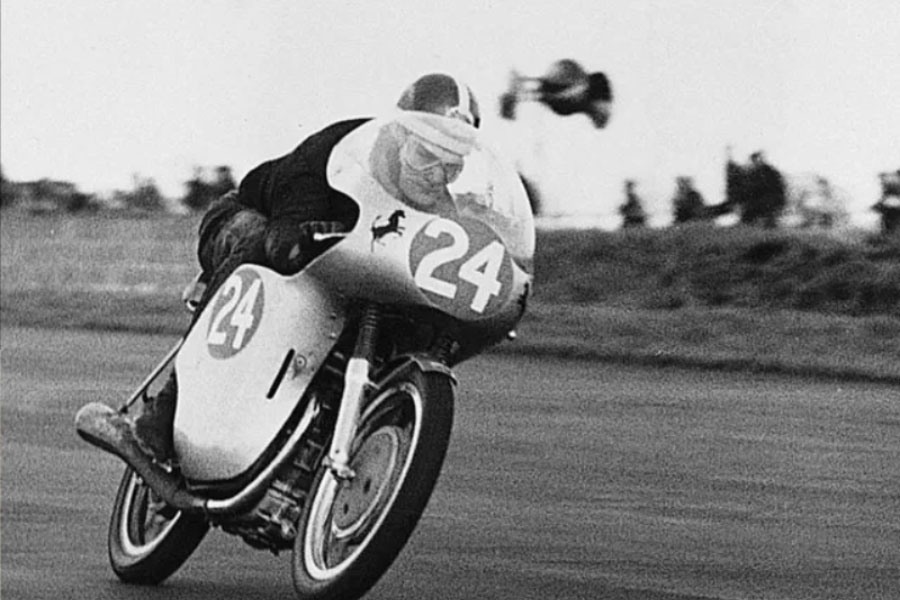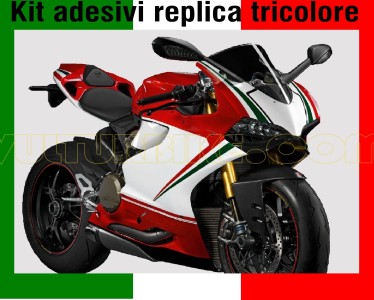
Ducati history, from birth to the present day The Ducati is not just a motorcycle manufacturer: Ducati is a faith. It is a feeling that, when it takes you, does not leave you anymore. Such a status is not acquired in a day, but with a history made of passion, competence and above all many beautiful bikes. A story that deserves to be told, from the early years to the recent era.
The company was founded in 1926 by the will of the engineer Antonio Cavalieri Ducati (Comacchio 2 April 1853 - Bologna 27 June 1927) with the name of Società Scientifica Radio Brevetti Ducati, specialized in the research and production of technologies for radio communications. The aim was to industrially exploit the patents of his son Adriano, a pioneer of radio broadcasting. Soon, thanks to the sons of Antonio Ducati (who died only a year after the foundation), the company began to establish itself, and then ranged in various industrial fields. The sons Adriano, Bruno and Marcello Cavalieri Ducati began their business with the production of a capacitor called "Manens", in the basement of a building located in the center of Bologna in Via Collegio di Spagna. Between 1930 and 1934 the production was expanded and moved to the villa owned by the Ducati family, in Via Guidotti.
Early history
In 1935 the plant was built where Ducati Motor Holding Spa and Ducati Energia Spa are currently based. The production was expanded with the creation of the first radio equipment, radio antennas, the first intercom communication systems (called "Dufono"), cinema projectors, adders (Duconta) and electric razors (Raselet). During the Second World War, Ducati was forced, like many other Italian companies, to convert sophisticated production from civilian to military use. Following the armistice of 8 September 1943, the factory was occupied by German troops; It was subsequently bombed and destroyed on 12 October 1944. The turning point came in the second post-war period, when there was the need to create a new production to be added to the previous realizations. So it was that, at the request of IRI, in 1946 the motorcycle department was born as a branch of the company in order to produce the "Cucciolo" under license. It is a single-cylinder engine of 48 cc, with two-speed gearbox to be applied as an auxiliary engine to a normal bicycle.
50s - 60s
In 1948 the Ducati brothers ceded ownership of the company to state shareholdings. Adriano emigrated to the United States where he joined Plamadyne and made important contributions to the development of plasma engines for NASA. In 1954 the company split into Ducati Meccanica and Ducati Elettrotecnica: Ducati Meccanica followed the construction of motorcycles, while Ducati Elettrotecnica continued the path initially traveled by the Ducati family. Also in 1954 Fabio Taglioni, the brilliant designer from Romagna who developed for Ducati, between 1954 and 1984, over a thousand motorcycle and engine projects, but above all the technologies still used today, the desmodromic system, the twin-cylinder engine and the trellis frame, was hired in Ducati Meccanica. During this period the company produced 2 scooters, the Cruiser and the Brio, in 1952 and 1963 respectively.
70s - 80s
Starting from 1975 the Ducati passed under the control of the Italian State through EFIM, which sold the company in 1978 to VM Motori (also under state control, being at the time part of the Finmeccanica galaxy), which mainly dealt with industrial and automotive diesel engines. This step, combined with the difficulties on the market (especially the US one) suffered by the house at the hands of Japanese rivals, led the company to focus on the production of diesel engines on behalf of the parent company and to remove the bikes from the list of priorities. The results of these factors were the collapse of sales, from 7000 motorcycles sold in 1981 to less than 2000 in 1984. Meanwhile, in the early eighties, the Varese Cagiva had signed an agreement with the Bolognese company for the supply of "Pantah" engines in order to create its own large displacement motorcycles.
Over time relations tightened and in 1985 the brothers Claudio and Gianfranco Castiglioni bought the Ducati from VM Motori, with the idea of moving the production of motorcycles to Varese, to leave Borgo Panigale the assembly of the "Pantah" engines.
90s
The Varese company maintained control until 1996, when the Texas Pacific Group bought 51% of the shares, and this decade was characterized by strong investments in competitions, with successes in Superbike races driving the company's sales. The Texas Pacific Group purchased the remaining 49% of the Ducati in 1998; the following year the company changed its name to Ducati Motor Holding SpA and the Texan fund placed over 65% of the shares held on the market. In the same year the first edition of World Ducati Week (WDW) was organized: the week dedicated to Ducati fans. On that occasion the new Ducati Museum was inaugurated, which collects racing vehicles from the Puppy to the modern Desmosedici.
From 2000 to today
In 2006 the Ducati brand returned to Italian hands with the purchase by Investindustrial Holdings, Andrea Bonomi's financial company, of a substantial share of the share capital. Another important date was April 18, 2012, when the acquisition of Ducati Motor Holding SpA by Lamborghini Automobili S.p.A. was announced: the Investindustrial group issued a press release informing that it had reached an agreement for the sale of its share. When the operations were completed, the Ducati became part of the Audi automotive group. Following the same operation, the AMG processing house (of the Mercedes Benz group), with which Ducati had developed a collaboration from which an exclusive model, the AMG Ducati Diavel , and a series of other commercial products were born, formally dissolved the alliance for "purchase of the company by a rival manufacturer". All products bearing the Ducati-AMG logo are therefore discontinued. A story therefore made up of various phases, with positive moments and others difficult, but with a red thread that has united all eras. A red thread like the color of the Ducati which, as mentioned above, is not only a more or less welcome brand but is a real faith with those who approach it and fall in love with it. And we at VULTURBIKE, are madly in love with it!

